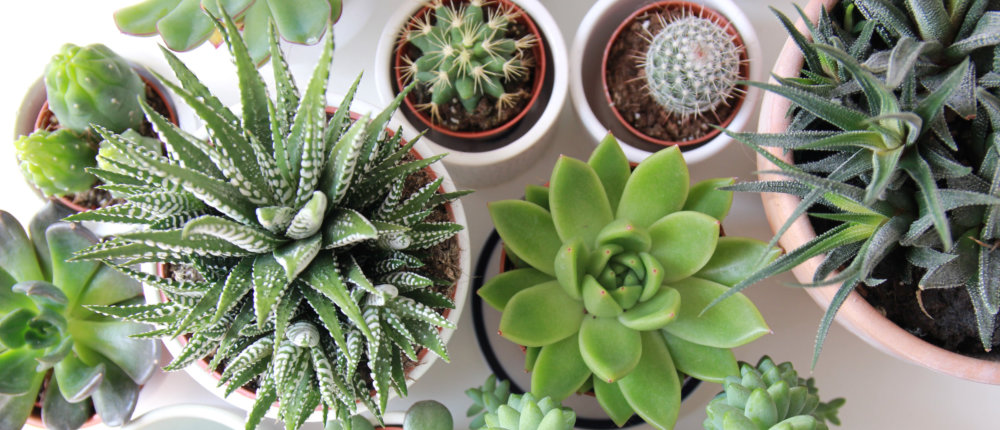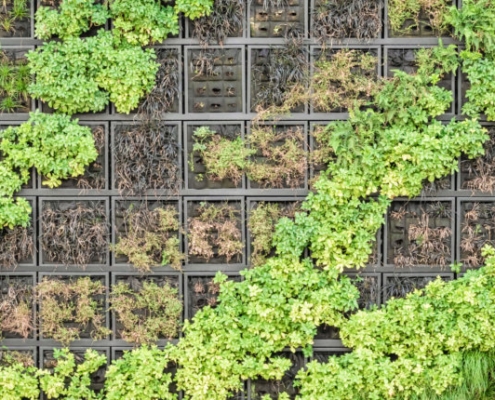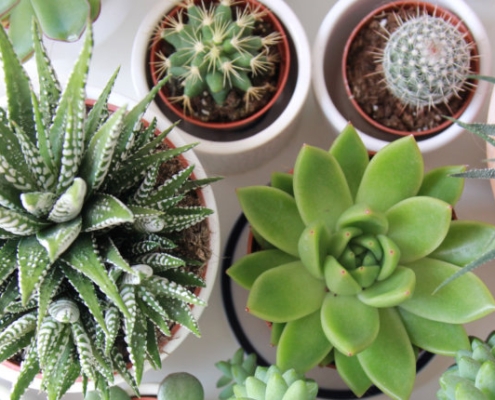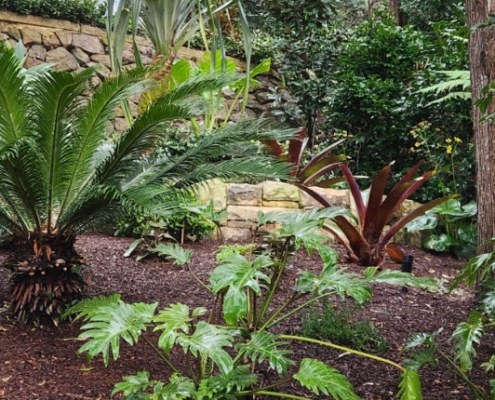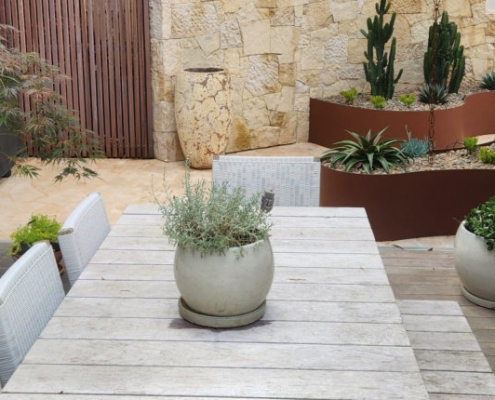Low-Maintenance Plants for Busy Lifestyles
In our fast-paced world, the hustle and bustle of modern life have become an undeniable reality. Balancing work, personal commitments, and leisure time has become an intricate juggling act for many.
Amidst this whirlwind, the significance of integrating low-maintenance plants into our living spaces has emerged. These green companions offer a practical solution to the time constraints and demands of our busy lives, bringing a touch of nature into our homes without overwhelming our already packed schedules.
Let’s explore why incorporating these low-effort plants is a simple yet impactful way to enhance our well-being amidst the chaos of contemporary living.
Benefits of Low-Maintenance Plants
A. Improved Indoor Air Quality
In the quest for a healthier living environment, low-maintenance plants play a pivotal role in enhancing indoor air quality. These green companions act as natural air purifiers, filtering out common pollutants and promoting a cleaner, fresher atmosphere within our homes or offices.
B. Cultivating Tranquility and Well-being
Beyond their air-purifying prowess, low-maintenance plants contribute to a sense of tranquillity and overall well-being. Their presence has been linked to reduced stress levels and an improved mood, creating a calm and soothing ambience in our daily surroundings.
C. Aesthetic Enhancement of Living Spaces
Low-maintenance plants effortlessly elevate the visual appeal of living spaces. Whether adorning shelves, tabletops, or corners, these plants bring a touch of nature’s elegance into our interiors. Their diverse shapes, sizes, and vibrant hues contribute to a visually pleasing and aesthetically enriching environment.
D. Stress-Free Care and Time Efficiency
One of the standout advantages of low-maintenance plants is the minimal stress and time they demand for care. With straightforward watering routines and adaptable environmental needs, these plants are well-suited for individuals with busy schedules. Enjoying the benefits of a green space becomes a seamless addition to daily life without the burden of intensive maintenance requirements.
Factors to Consider When Choosing Low-Maintenance Plants
A. Light Requirements
When selecting low-maintenance plants, it’s crucial to assess their light requirements. Different plants thrive in varying light conditions, ranging from bright sunlight to low-light environments. Understanding the natural light available in your space will help you choose plants that can flourish and remain resilient.
B. Watering Needs
Another key consideration is the watering needs of the chosen plants. Low-maintenance plants generally fare well with infrequent watering, but the specific requirements can vary. It’s essential to strike a balance, providing enough moisture without overwatering, which can lead to potential issues like root rot.
C. Soil Preferences
The type of soil in which a plant is rooted significantly impacts its health and growth. Low-maintenance plants often tolerate a range of soil conditions, but understanding their preferences for well-draining or moisture-retaining soil can make a significant difference. Choosing the right soil ensures optimal conditions for your plants to thrive.
D. Space Considerations
Assess the available space in your living or working area before deciding on low-maintenance plants. Some plants are compact and suitable for smaller spaces, while others may require more room to spread out. Consider the dimensions and layout of your space to determine the most fitting plants that won’t feel cramped or overcrowded.
E. Tolerance to Temperature Variations
Low-maintenance plants that can adapt to temperature fluctuations are ideal for ensuring long-term health. Evaluate the temperature conditions in your environment, considering both seasonal changes and potential variations in indoor climate control. Opt for plants that can withstand the temperature range of your specific location, promoting resilience and longevity.
Top Low-Maintenance Indoor Plants
A. Snake Plant
The Snake Plant, known for its durability, is an excellent choice for low-maintenance indoor greenery. With its upright leaves and striking appearance, it adds a touch of sophistication to any space. Thriving in various light conditions, this plant requires minimal watering, making it ideal for those with busy schedules. Simply place it in indirect sunlight and allow the soil to dry between waterings to keep it thriving.
B. ZZ Plant
The ZZ Plant stands out for its adaptability and resilience, making it a popular low-maintenance indoor plant. Its glossy, dark green leaves provide an attractive aesthetic, and it excels in low-light environments. Requiring infrequent watering, the ZZ Plant is forgiving of neglect and is an excellent choice for individuals looking to effortlessly enhance their indoor spaces.
C. Peace Lily
The Peace Lily is a graceful indoor plant celebrated for its elegant white blooms and air-purifying properties. This low-maintenance plant adds a sense of tranquillity to any room. With moderate light requirements and a simple watering routine, the Peace Lily is an ideal choice for those seeking a visually appealing and hassle-free indoor plant.
D. Pothos
Pothos, also known as Devil’s Ivy, is a versatile and easy-to-care-for indoor plant. Its cascading vines and heart-shaped leaves make it a visually appealing addition to various spaces. Thriving in low to moderate light, Pothos requires minimal attention, with a straightforward care routine of allowing the soil to dry between waterings.
E. Spider Plant
The Spider Plant is a resilient and vibrant indoor option, known for its arching leaves and spider-like offshoots. This low-maintenance plant thrives in indirect light and requires moderate watering. With its air-purifying qualities, the Spider Plant is an excellent choice for those seeking a fuss-free and visually appealing addition to their indoor environment.
Low-Maintenance Outdoor Plants
A. Lavender
Lavender is a delightful outdoor plant with fragrant blooms and additional benefits, including pest-repellent properties. Its low-maintenance nature makes it an excellent choice for outdoor spaces. Planting in well-draining soil, providing full sunlight, and occasional pruning after flowering are simple care recommendations for keeping lavender vibrant and healthy.
B. Succulents
Succulents, including popular varieties like Aloe Vera and Echeveria, are characterized by their water-storing leaves, making them well-suited for outdoor environments. These plants thrive with minimal care, requiring well-draining soil, ample sunlight, and infrequent watering to prevent root rot. Their diverse shapes and colours add visual interest to outdoor spaces effortlessly.
C. Ornamental Grasses
Ornamental grasses, such as Fountain Grass and Maiden Grass, introduce texture and movement to outdoor settings. These plants boast minimal maintenance requirements, making them a practical choice for busy individuals. Trimming back in late winter or early spring, providing well-draining soil, and enjoying their graceful beauty are key considerations for maintaining ornamental grasses in outdoor spaces.
Tips for General Plant Care Efficiency
A. Consistent Watering Schedule
To keep your plants healthy and happy, establish a regular watering routine. Consistency is key, and it helps prevent both under and overwatering. Check the moisture level in the soil regularly and adjust your watering schedule based on the specific needs of each plant. This simple practice ensures that your plants receive the right amount of hydration without causing stress.
B. Optimal Sunlight Exposure
Proper placement is crucial for your plants to thrive. Understand the sunlight preferences of each plant and position them accordingly. Plants that love sunlight should be placed where they can soak up the rays, while those that prefer shade should be positioned in areas with less direct sunlight. Paying attention to these light requirements contributes to the overall well-being of your plants.
C. Self-Watering Pots and Planters
Consider using self-watering pots and planters to streamline your plant care routine. These containers have built-in mechanisms that help regulate water supply, reducing the risk of overwatering. Self-watering pots are particularly helpful for busy individuals, providing an extra layer of convenience while ensuring your plants receive consistent moisture.
D. Right Type of Soil Mix
The type of soil your plants are rooted in significantly impacts their health. Choose a soil mix that suits the specific needs of your plants, considering factors such as drainage and moisture retention. Well-draining soil is generally a good choice for preventing waterlogged roots. Tailoring the soil mix to your plants’ requirements sets the foundation for their overall growth and resilience.
Integrating low-maintenance plants into your living spaces offers a practical and rewarding solution for those navigating the demands of a busy lifestyle. Beyond their aesthetic appeal, these green companions contribute to improved indoor air quality, fostering tranquillity with minimal effort required for their upkeep.
As you strive to find balance in your hectic life, the simplicity of caring for plants like Snake Plants, ZZ Plants, and Lavender provides a refreshing and manageable way to connect with nature. Following basic care tips, such as creating a consistent watering schedule and choosing the right soil mix, allows you to effortlessly enjoy the benefits of a green and thriving environment without adding undue stress to your already packed schedule. Embracing low-maintenance plants is a small yet impactful step towards achieving a harmonious coexistence between your bustling life and the natural world within your home.

